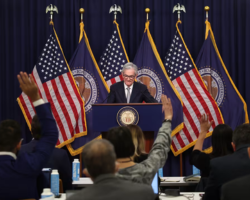Markets Brace for Powell's Jackson Hole Speech as Wall Street Sinks and Gold Gains Support | Daily Market Analysis
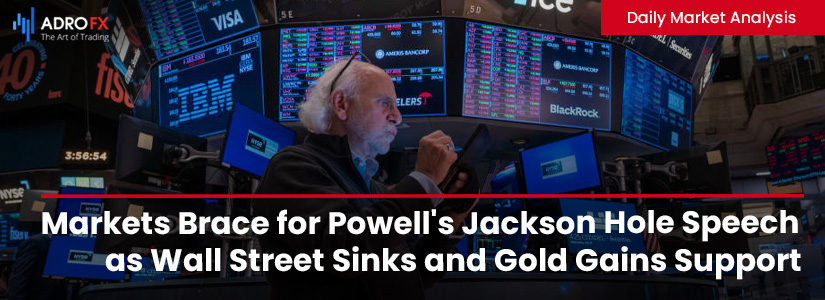
Key events:
- USA - Fed Chair Powell Speaks
- USA - New Home Sales (Jul)
On Thursday, the S&P 500 ended in the red, weighed down by rising yields as investors took a cautious approach ahead of Federal Reserve Chairman Jerome Powell's upcoming speech at Jackson Hole.
The Dow Jones Industrial Average dropped 177 points, or 0.4%, while the S&P 500 decreased by 0.8%, and the Nasdaq Composite saw a larger decline of 1.6%.
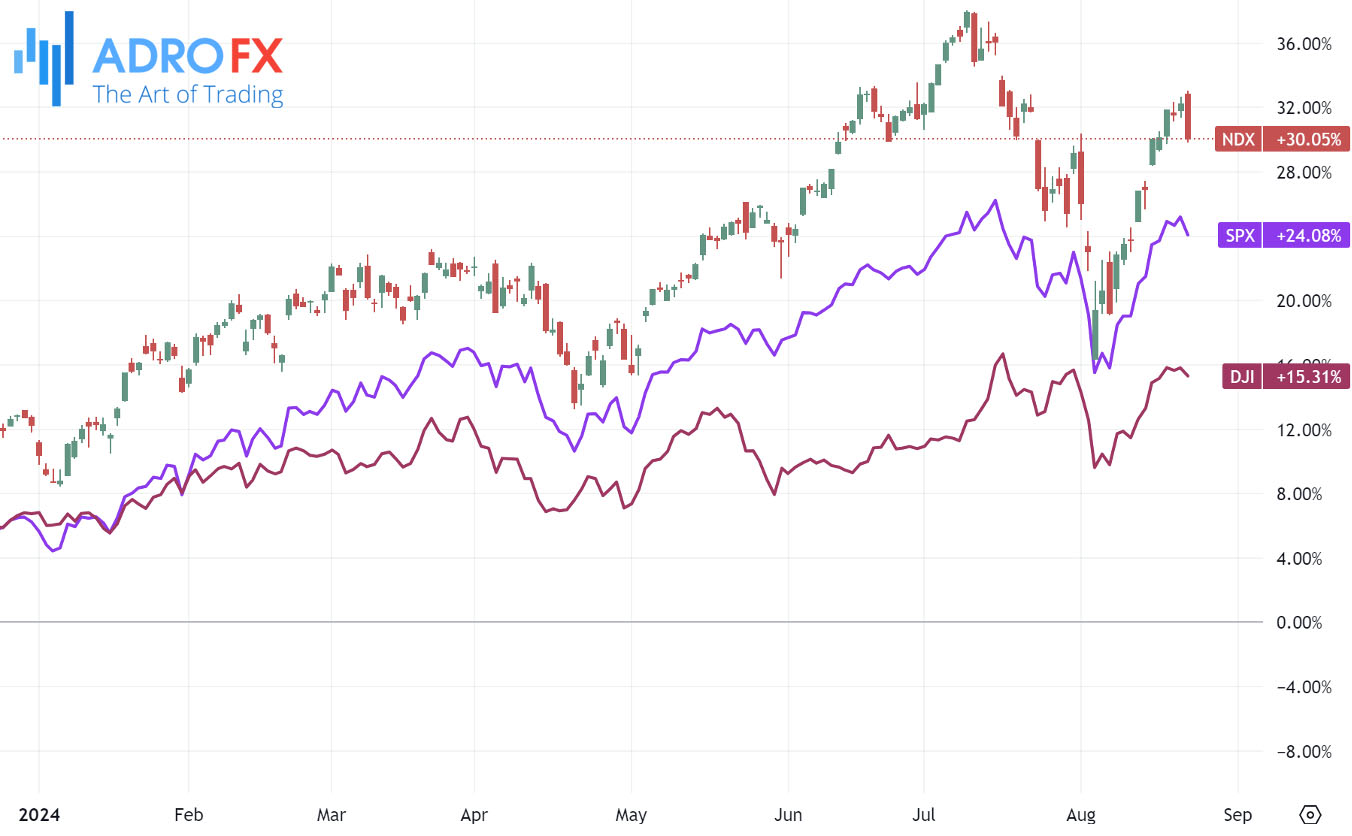
Wall Street's losses were largely influenced by climbing Treasury yields, as market participants awaited Powell's address at the Jackson Hole Symposium on Friday.
Many expect Powell to reaffirm the central bank’s dovish position, potentially paving the way for a rate cut in September, although it's uncertain if he will explicitly signal such a move.
Before Powell's speech, Kansas City Fed President Jeffrey Schmid mentioned that more economic data is needed before supporting any interest rate reductions.
Gold prices found new buyers during the Asian session on Friday, recovering from the weekly low seen the previous day. Despite the growing belief that the Federal Reserve might lower interest rates at the September meeting, the US Dollar struggled to maintain its recent rebound from the year-to-date low. Geopolitical uncertainties also continued to support the safe-haven appeal of gold.

However, gold remains below the significant $2,500 mark, with traders awaiting Powell's Jackson Hole speech for more clarity on the Fed's rate-cut plans, which could set a new direction for the metal. Additionally, developments in Israel-Hamas ceasefire discussions are expected to impact the near-term movement of XAU/USD, which is on track for modest weekly losses.
The Japanese Yen gains strength against the US Dollar after the release of the National Consumer Price Index (CPI) inflation data and a speech by Bank of Japan Governor Kazuo Ueda in Parliament on Friday. Ueda mentioned that "the BoJ raised rates in July as the economy and inflation aligned with forecasts."
Governor Ueda also indicated that there would be no shift in the monetary easing stance as long as the economy and inflation stay on track with expectations. He emphasized that the recent policy decisions by the BoJ were appropriate and cautioned that speculating on future policy moves could lead to unnecessary market volatility.
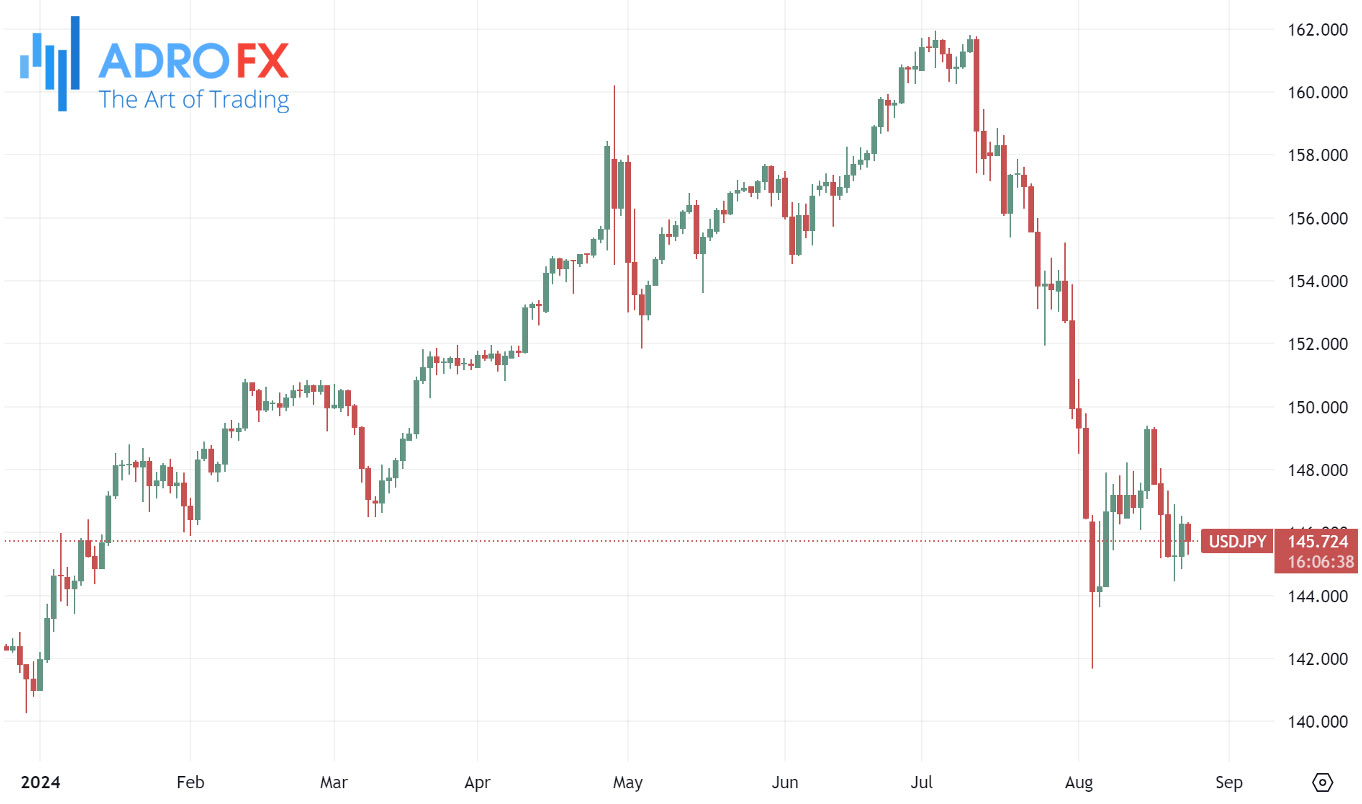
The USD/JPY pair weakens as the US Dollar faces downward pressure due to lower Treasury yields. However, the Dollar managed to recover some ground following the release of mixed S&P Global Purchasing Managers Index (PMI) data on Thursday.
The EUR/USD pair gains positive momentum as the week comes to a close, halting its pullback from the over-one-year high reached on Wednesday. Spot prices are currently around the 1.1125 region, supported by fresh selling pressure on the US Dollar.
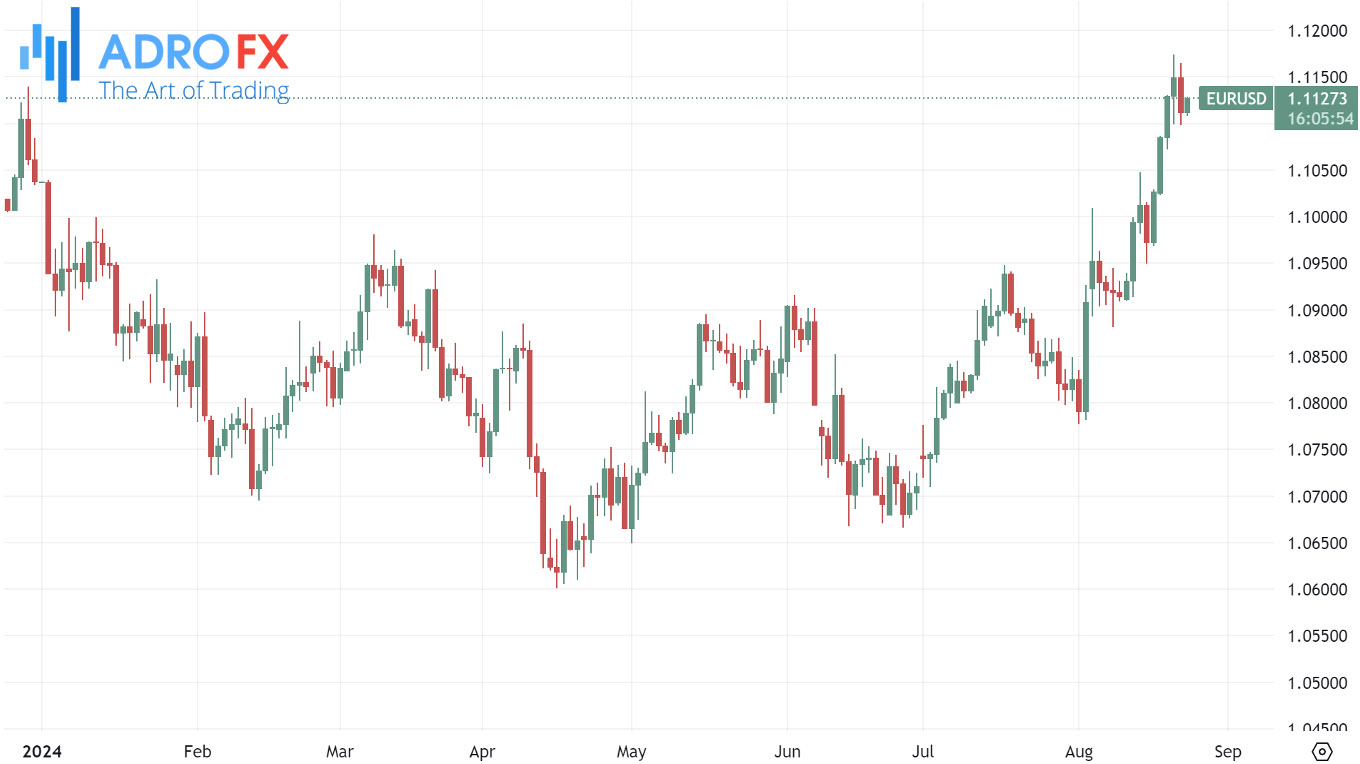
Wednesday's data showed that US job growth from the past year up to March was much weaker than initially thought. Additionally, a rise in US Weekly Initial Jobless Claims signaled a cooling labor market, along with a decline in the US Manufacturing PMI. This combination of data bolstered expectations for a potential Federal Reserve rate cut in September, which limited the Dollar's recovery from its year-to-date lows. As a result, this overshadowed Thursday's mixed Eurozone PMI data and provided some support to the EUR/USD pair.
The preliminary Eurozone composite PMI from S&P Global came in at 54.1, slightly above the expected 53.5 but lower than the previous month's 54.3. However, Germany, the Eurozone's largest economy, saw business activity contract for the second month in a row, surpassing expectations. Additionally, wage growth in the Eurozone slowed to 3.55% in Q2 2024, down from 4.74% in Q1 2024, supporting the case for two more rate cuts from the European Central Bank this year. This could temper aggressive bullish bets on the Euro and cap significant gains for the EUR/USD pair.
At the same time, minutes from the ECB's July meeting revealed that the September meeting was considered a good opportunity to reevaluate the extent of monetary policy tightening. ECB Governing Council member Martins Kazaks expressed confidence that inflation would return to 2%, raised concerns about the economy, and showed a willingness to discuss another rate cut at the September meeting. This suggests that while the EUR/USD pair may face resistance in further upward movements, ongoing weakness in the US Dollar could continue to lend support.
The Australian Dollar retreated from its recent gains against the US Dollar on Friday amid increased risk-on sentiment. Traders are eagerly awaiting US Federal Reserve Chair Jerome Powell’s upcoming speech at the Jackson Hole Symposium later in the North American session.
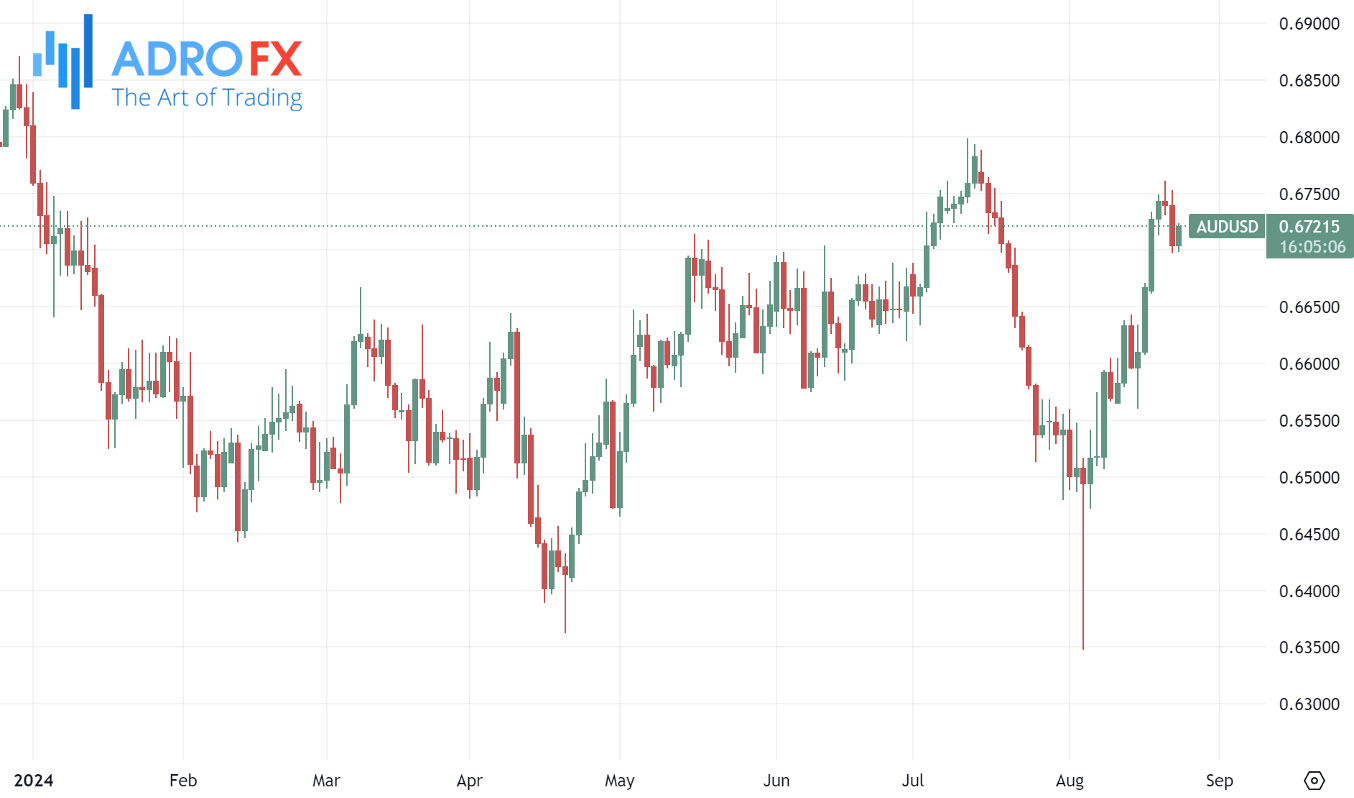
Despite the pullback, the AUD/USD pair could continue to rise due to the hawkish stance of the Reserve Bank of Australia. RBA Governor Michele Bullock indicated that the central bank would not hesitate to raise rates again if necessary to combat inflation. Moreover, the RBA's August Meeting Minutes hinted that the cash rate might remain unchanged for a prolonged period.


